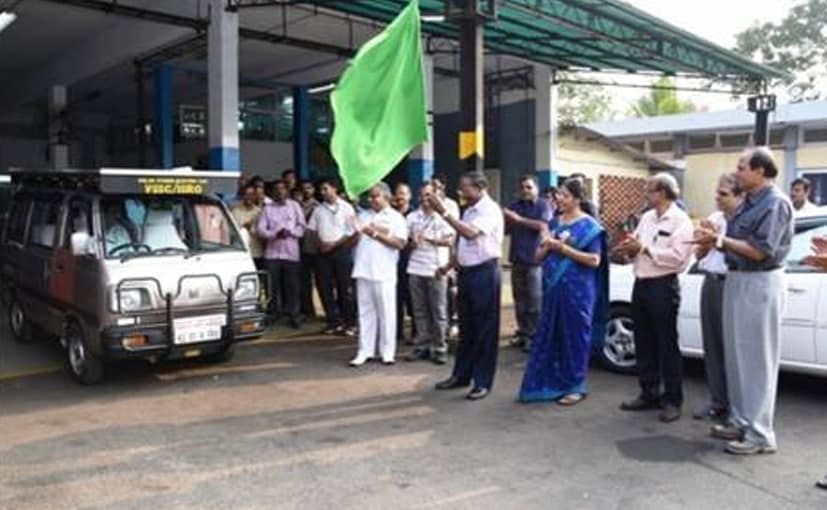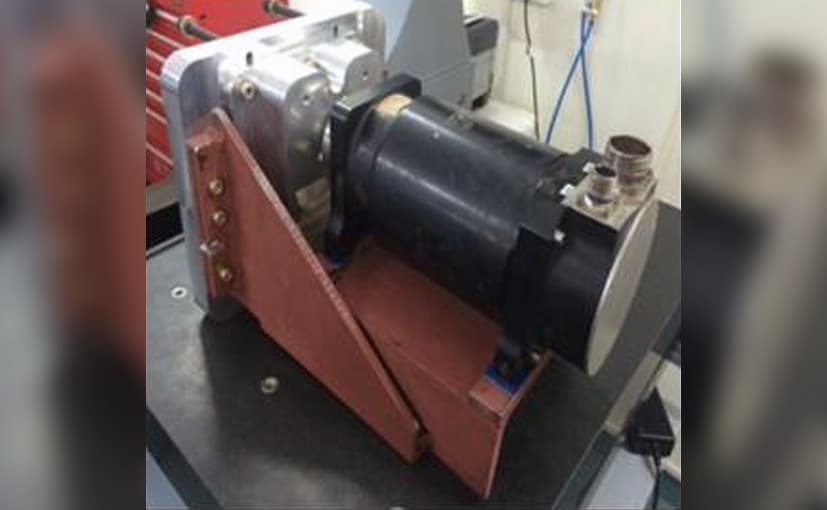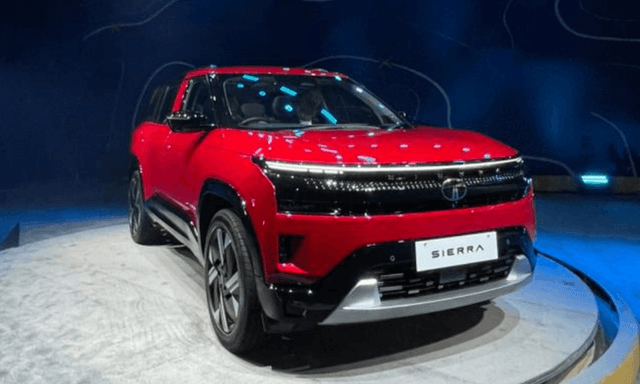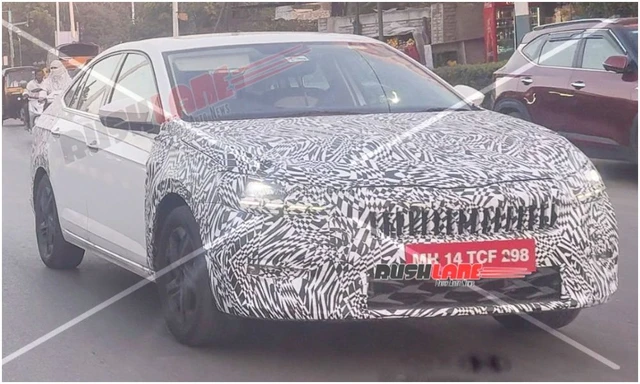ISRO Demonstrates Solar Hybrid Electric Car
car&bike Team
1 min read
May 02, 2017, 02:54 PM

Key Highlights
- A Maruti Omni was fitted with this technology
- Energy is supplied to the vehicle by energy density Lithium ion batteries
- The solar panel charges the battery on the go
As we see the world moving towards electric cars or even hybrids, there’s still a very important energy source that remains untapped - the sun. While there has been a lot of development in the area of using solar energy in homes, there’s also been significant development in the area of using it for transport – solar cars, does it ring a bell? It’s the Indian Space Research Organisation that has now come with a solution. ISRO demonstrated its solar hybrid electric car and there's a strong reason behind working on it. The organisation explained this by saying, “Vehicles using fossil fuels persistently bring serious problems to environment and life. In this perspective, Solar and Electrical energy based hybrid vehicles provide the most effective and viable long-term solution by using renewable energy sources for mobility.”
Vikram Sarabhai Space Centre (VSSC), ISRO, Thiruvananthapuram, demonstrated the running of a solar hybrid electric car using in-house expertise and resources within ISRO. As you can imagine, there were a number of problems that it had to handle and this included, the right solar panel to suit the roof top of car, a super-capacitor to meet the high peak current of beyond 100 A level, an integral gear box to augment the performance of the Brushless DC (BLDC) motor and of course control electronics for the battery and solar panel interface and drive electronics for running the motor in a smooth way. The biggest one of course was the conversion of the internal combustion engine (ICE) based vehicle, which was a Maruti Suzuki Omni, to fit in with the electric motor.
 To drive the car, energy was supplied to the vehicle by energy density Lithium ion batteries connected across high power density super-capacitors. The battery delivered the sustained energy requirement while the super-capacitor supported the peak power demand during high torque conditions. This arrangement of power sharing helped in enhancing the life of power-restricted batteries.
To drive the car, energy was supplied to the vehicle by energy density Lithium ion batteries connected across high power density super-capacitors. The battery delivered the sustained energy requirement while the super-capacitor supported the peak power demand during high torque conditions. This arrangement of power sharing helped in enhancing the life of power-restricted batteries.
 A solar panel fitted on rooftop of the car charges the battery by absorbing the sunlight. Now, this electrical energy needed to be converted to mechanical energy to drive the wheels and this was achieved by integrating an efficient power conversion module between energy system and electric motor. The usage of a Brushless type motor helped in improving the torque and reducing energy input while also helping in weight savings. The organization also states that “Concerted efforts were made to ensure that the associated safety aspects are not compromised while combining various active subsystems of different behaviour for a focused objective.”
A solar panel fitted on rooftop of the car charges the battery by absorbing the sunlight. Now, this electrical energy needed to be converted to mechanical energy to drive the wheels and this was achieved by integrating an efficient power conversion module between energy system and electric motor. The usage of a Brushless type motor helped in improving the torque and reducing energy input while also helping in weight savings. The organization also states that “Concerted efforts were made to ensure that the associated safety aspects are not compromised while combining various active subsystems of different behaviour for a focused objective.”
Image Courtesy: ISRO
Vikram Sarabhai Space Centre (VSSC), ISRO, Thiruvananthapuram, demonstrated the running of a solar hybrid electric car using in-house expertise and resources within ISRO. As you can imagine, there were a number of problems that it had to handle and this included, the right solar panel to suit the roof top of car, a super-capacitor to meet the high peak current of beyond 100 A level, an integral gear box to augment the performance of the Brushless DC (BLDC) motor and of course control electronics for the battery and solar panel interface and drive electronics for running the motor in a smooth way. The biggest one of course was the conversion of the internal combustion engine (ICE) based vehicle, which was a Maruti Suzuki Omni, to fit in with the electric motor.

The Brushless motor had to be modified to improve torque

Energy was supplied to the vehicle by energy density Lithium ion batteries
Image Courtesy: ISRO
Trending News
Latest News
 car&bike Team | Dec 14, 2025Top-Spec Tata Sierra Accomplished, Accomplished+ Prices RevealedRegardless of the powertrain combination chosen, all Tata Sierra Accomplished+ trims cost upwards of Rs 20 lakh (ex-showroom).2 mins read
car&bike Team | Dec 14, 2025Top-Spec Tata Sierra Accomplished, Accomplished+ Prices RevealedRegardless of the powertrain combination chosen, all Tata Sierra Accomplished+ trims cost upwards of Rs 20 lakh (ex-showroom).2 mins read car&bike Team | Dec 13, 2025Skoda Slavia Facelift Spied Testing Again Ahead Of DebutThe facelifted Slavia is expected to debut in 2026 as Skoda-VW India looks to refresh its India 2.0 range.1 min read
car&bike Team | Dec 13, 2025Skoda Slavia Facelift Spied Testing Again Ahead Of DebutThe facelifted Slavia is expected to debut in 2026 as Skoda-VW India looks to refresh its India 2.0 range.1 min read car&bike Team | Dec 13, 20252026 MG Hector Facelift Interior Previewed Ahead Of DebutLatest teaser video of the upcoming Hector facelift suggests minimal cosmetic changes to the interior as well as reveals a new alloy-wheel design.1 min read
car&bike Team | Dec 13, 20252026 MG Hector Facelift Interior Previewed Ahead Of DebutLatest teaser video of the upcoming Hector facelift suggests minimal cosmetic changes to the interior as well as reveals a new alloy-wheel design.1 min read Jaiveer Mehra | Dec 13, 2025Passenger Vehicle, Two-Wheeler Sales Surge In November 2025: SIAMBoth segments reported a growth in the region of 20 per cent, though year-to-date sales growth in FY2026 was notably flatter at around 3 per cent.1 min read
Jaiveer Mehra | Dec 13, 2025Passenger Vehicle, Two-Wheeler Sales Surge In November 2025: SIAMBoth segments reported a growth in the region of 20 per cent, though year-to-date sales growth in FY2026 was notably flatter at around 3 per cent.1 min read car&bike Team | Dec 12, 2025Nissan Entry MPV Design To Be Unveiled On December 18New MPV to be the first of three new models for India by Nissan, alongside the Tekton and a three-row SUV.1 min read
car&bike Team | Dec 12, 2025Nissan Entry MPV Design To Be Unveiled On December 18New MPV to be the first of three new models for India by Nissan, alongside the Tekton and a three-row SUV.1 min read Jaiveer Mehra | Dec 12, 2025New Mini Convertible Launched At Rs 58.50 LakhDrop-top variant of the iconic Cooper hatchback available in a single Cooper S spec.1 min read
Jaiveer Mehra | Dec 12, 2025New Mini Convertible Launched At Rs 58.50 LakhDrop-top variant of the iconic Cooper hatchback available in a single Cooper S spec.1 min read
 Janak Sorap | Dec 11, 2025Harley-Davidson X440 T First Ride Review: Smarter and SharperHarley-Davidson has taken the X440 and given it a more focused and engaging twist. The result is the X440 T—essentially the same platform but updated in areas that give the motorcycle more appeal and riders more thrill.5 mins read
Janak Sorap | Dec 11, 2025Harley-Davidson X440 T First Ride Review: Smarter and SharperHarley-Davidson has taken the X440 and given it a more focused and engaging twist. The result is the X440 T—essentially the same platform but updated in areas that give the motorcycle more appeal and riders more thrill.5 mins read Shams Raza Naqvi | Dec 10, 20252025 Mini Cooper Convertible Review: More Colour On Indian RoadsThe updated Mini Cooper Convertible is set to be launched in the Indian market in the next few days. We drive it around Jaisalmer for a quick review.1 min read
Shams Raza Naqvi | Dec 10, 20252025 Mini Cooper Convertible Review: More Colour On Indian RoadsThe updated Mini Cooper Convertible is set to be launched in the Indian market in the next few days. We drive it around Jaisalmer for a quick review.1 min read Bilal Firfiray | Dec 8, 2025Tata Sierra Review: India’s New Favourite?Marking its return after a few decades, the reborn Sierra has made everyone sit up and take notice. But is it worth the hype?10 mins read
Bilal Firfiray | Dec 8, 2025Tata Sierra Review: India’s New Favourite?Marking its return after a few decades, the reborn Sierra has made everyone sit up and take notice. But is it worth the hype?10 mins read Girish Karkera | Dec 4, 20252026 Honda Prelude First Drive: Domesticated Civic Type RA sporty-looking coupe built to give customers a taste of performance but not at the expense of everyday practicality.5 mins read
Girish Karkera | Dec 4, 20252026 Honda Prelude First Drive: Domesticated Civic Type RA sporty-looking coupe built to give customers a taste of performance but not at the expense of everyday practicality.5 mins read Seshan Vijayraghvan | Nov 29, 2025Mahindra XEV 9S First Drive Review: Big Electric SUV, Bigger ExpectationsThe XEV 9S lands at a time when the EV crowd is growing fast. It’s a big, born-electric, three-row SUV that starts under 20 lakh. It sits close to the XUV700 in size, but the brief is very different. Here’s what it’s like on the road.11 mins read
Seshan Vijayraghvan | Nov 29, 2025Mahindra XEV 9S First Drive Review: Big Electric SUV, Bigger ExpectationsThe XEV 9S lands at a time when the EV crowd is growing fast. It’s a big, born-electric, three-row SUV that starts under 20 lakh. It sits close to the XUV700 in size, but the brief is very different. Here’s what it’s like on the road.11 mins read
































































































































